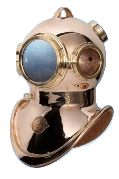rstofer
Contributor
You can reach the recreational limit of 130' with EAN28 and extend the NDL somewhat. I guess that qualifies as a 'deep diving' gas within recreational guidelines.
Richard
Richard
Welcome to ScubaBoard, the world's largest scuba diving community. Registration is not required to read the forums, but we encourage you to join. Joining has its benefits and enables you to participate in the discussions.
Benefits of registering include
Statistics prove that there has been no reduction in DCS cases when using Nitrox. Theoretically, you stand a better chance due to less nitrogen, but air tables and computers are so conservative that the risk of DSC is already low.One of the benefits, often overlooked, of using EAN, at any depth, is the likelyhood of getting DCS is significantly reduced.
There are no good arguments for NOT using Nitrox.

Statistics prove that there has been no reduc[t]ion in DCS cases when using Nitrox.
I'm not going to spend more than twice the cost of air for those dives.
I'd be interested to see those statistics. Do they indicate that diving EAN on air tables is a waste of time, or that pushing EAN to on EAN tables has the same level or risk as pushing air to air limits? Two rather different issues with understandably different answers.Statistics prove that there has been no reduction in DCS cases when using Nitrox. Theoretically, you stand a better chance due to less nitrogen, but air tables and computers are so conservative that the risk of DSC is already low.
As ptyx said, cost, availability and training are good arguments. The majority of dives I make are beach dives in less than seventy feet. I'm not going to spend more than twice the cost of air for those dives. When I make wreck dives I'm usually deeper than Nitrox allows, so I use 50% and 100% O2 for deco gasses.
The only dives I use Nitrox on are working dives such as net removal when I want to spend more time on the bottom with less deco.
